Ocean Watch posted April 24, 2020
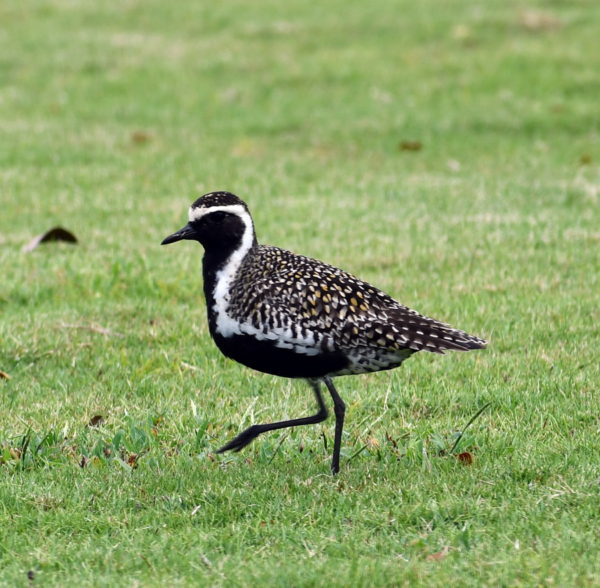
April 2020 male, Mililani © Susan Scott
In late April, I always feel sad to see our Kolea gathering in flocks, because I know I’ll wake up one morning and our beautiful birds will be gone.
This year, the Pacific Golden-Plover’s leave-taking is particularly poignant. Given the trials of covid-19, the graceful birds prancing around our lawns, all dressed up in their spring finery, have been giving us residents a much-needed spirit boost.
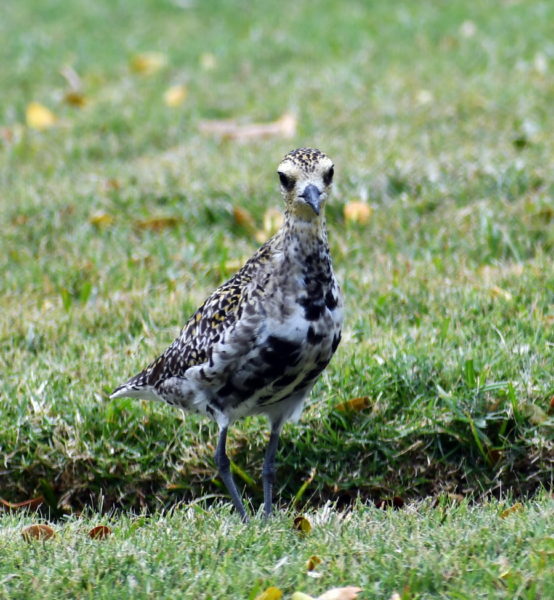
April, 2020 female, Punchbowl Cemetery © Susan Scott
Kolea researcher, Wally Johnson, who is sheltering with a friend in Maine, is also having warmhearted thoughts about Hawaii’s plovers. “Our little guys in the islands must all be gorgeous now and filling their tanks for their big trip…” he emailed. “Go Kolea!”
They sure are filling their tanks. Last weekend on a Kolea count, Craig and I visited several Oahu cemeteries and saw plovers so plump, we barely recognized them. The birds were nearly double their winter weight, and looked it.
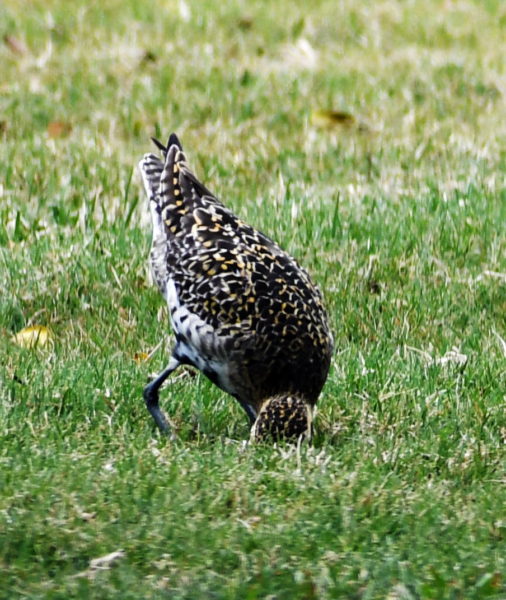
Female foraging, April 2020, Punchbowl Cemetery © Susan Scott
The Kolea are bulking up to fuel their 3,000-mile, nonstop flight to Alaska. Not all Pacific-Golden Plovers, however, get to their Arctic breeding grounds in one go.
Wally’s latest plover publication, https://bit.ly/3cFjT9v, reports the migration patterns of 13 Pacific Golden-Plovers that he and his team caught, and attached GPS tags to, in Moorea, about 2,600 miles south of Hawaii.
The Moorea birds, known as Torea in Tahitian, left their wintering grounds a bit earlier than here in Hawaii, the average departure being April 14th. But rather than going directly north to the Arctic, as our plovers do, the Moorea study birds flew 6,000 miles nonstop to Japan, where they foraged in rice fields.
The Japanese know Pacific Golden-Plovers as Munaguro. (Guro means black, referring to the males’ chest color.) Check out this excellent video of plovers in a Teganuma-region rice field, 20-some miles northwest of Tokyo: bit.ly/3boO5Fn
After refueling for an average of 21 days, the tagged birds left in mid-to-late May and flew another 2,000 to 3,000 miles to the Bering Sea region, some to Alaska and others to Russia.
On September 8, the only bird carrying a still-functioning GPS device, left the Alaska Peninsula and flew nonstop to Samoa, about 5,400 miles, in 8 days. The signal then failed.
Compared to the Moorea birds’ approximately annual 14,000-mile circular migrations, our Hawaii birds’ annual 6,000-mile round-trips seem like short hops. All plovers’ feats of flight, though, are a wonder of nature.
The familiar pattern of our Kolea changing color, and fattening up, for their mission of continuing the species is a pleasant reminder that regardless of the trials we humans face, life on Earth carries on.
To counter my sad feeling of saying good-bye to our Kolea, I imagine them in Alaska as parents with their fluffy yellow chicks following them around.
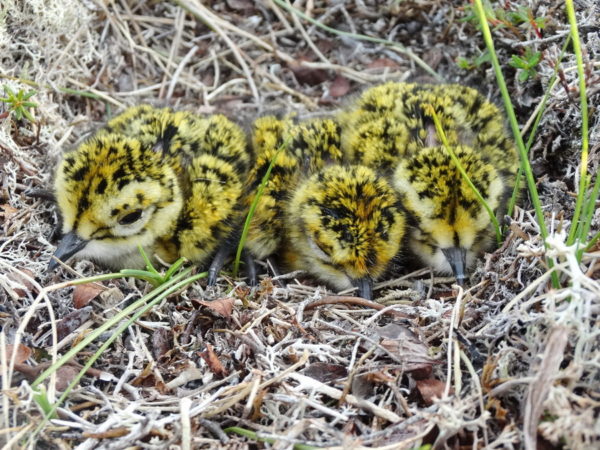
Three Kolea chicks, Alaska, June, 2019 © Oscar W. Johnson
Come August, I’ll be saying welcome home. It’s fond aloha both ways.
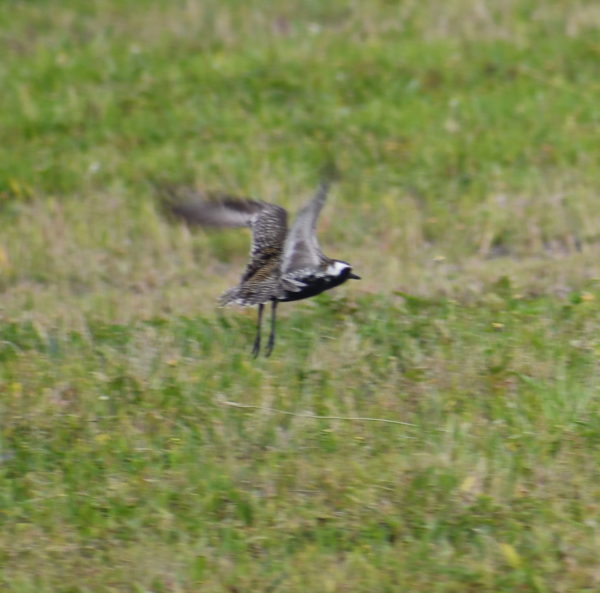
Kualoa Regional Park, April, 2020. © Susan Scott
Kolea count update: Thank you to all who entered records at www.koleacount.org. I’m currently updating the site, and will start a fresh count in July/August. If you have a last sighting date of your bird this spring, or see Kolea summering in Hawaii, please enter on the count site as a new entry, or send me the information under CONTACT. Thanks, Susan
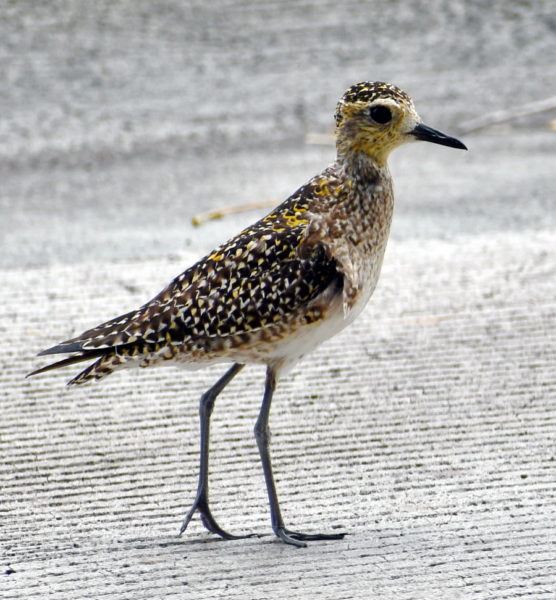
This slender Punchbowl plover did not molt into breeding colors and will likely spend the summer in Hawaii. Photo April 23, 2020 © Susan Scott